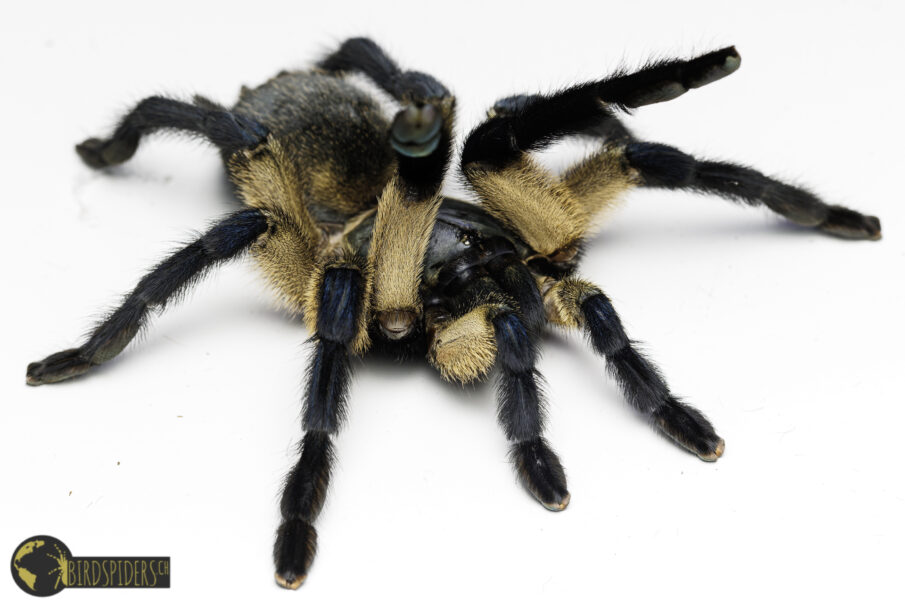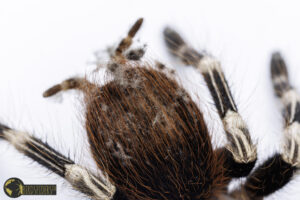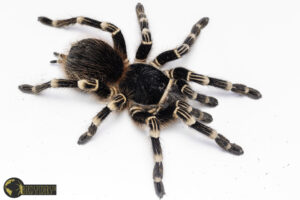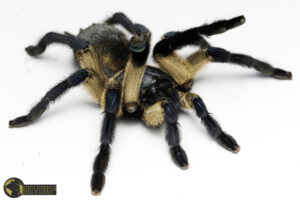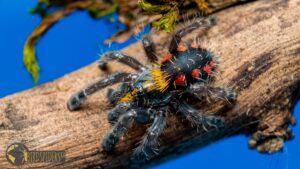Overview
Monocentropus balfouri, commonly known as the Socotra Blue Island tarantula, is a fascinating species belonging to the family Theraphosidae. First described by R.I. Pocock in 1897, this species is endemic to the island of Socotra in Yemen. With a size ranging from 6 to 7 cm (approximately 2.4 to 2.8 inches), it is a ground-dwelling spider that thrives in a unique habitat characterized by its distinct climate and vegetation.
Natural History
The Socotra Island tarantula is adapted to the specific environmental conditions of its native habitat. The island experiences a significant variation in climate, with average temperatures around 27°C (81°F) and extremes reaching up to 40°C (104°F) during the hottest months. Humidity levels fluctuate between 60% and 90%, influenced by two monsoon periods. Rainfall varies greatly, with higher altitudes receiving up to 1000 mm (39.4 inches) of rain, while lower areas get only 130-170 mm (5.1-6.7 inches) annually.
Monocentropus balfouri is known for its interesting reproductive behavior. The female is relatively non-aggressive during mating and may remain in a copulatory position for an extended period. After mating, the female produces a silk cocoon containing 20-40 eggs, which hatch after 1.5 to 2 months. Interestingly, the mother actively cares for her young, allowing them to feed directly from her chelicerae, which enhances their survival rate.
Taxonomy & Systematics
Monocentropus balfouri is classified under the family Theraphosidae and the subfamily Eumenophorinae. It is the only species of this genus found on Socotra Island, alongside related species such as Monocentropus lambertoni and Monocentropus longimanus. The species has been referenced in various taxonomic studies, highlighting its unique characteristics and ecological significance.
- First Described: Pocock, 1897
- Distribution: Socotra, Yemen
- Size: 6-7 cm (2.4-2.8 inches)
Husbandry
For those interested in keeping Monocentropus balfouri as a pet, proper husbandry is essential. A suitable terrarium should measure at least 40x30x30 cm (15.7×11.8×11.8 inches) or larger. The substrate should be burrowable and can include small stones to mimic their natural habitat. Ideal temperature ranges are 25-30°C (77-86°F) during the day and 22-25°C (71.6-77°F) at night, with humidity levels maintained between 60% and 90%.
In terms of vegetation, incorporating drought-resistant plants such as succulents and grasses can create a more natural environment. Breeding this species can be relatively straightforward, but challenges may arise during the rearing of young. It is recommended to keep the cocoon with the mother to minimize losses during the hatching process.
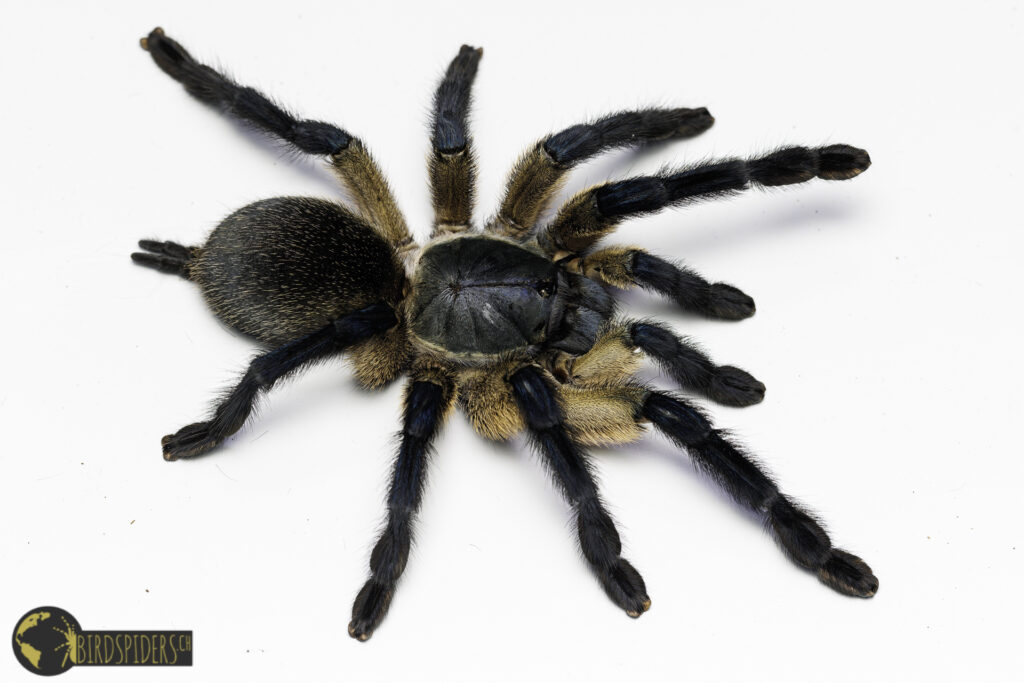
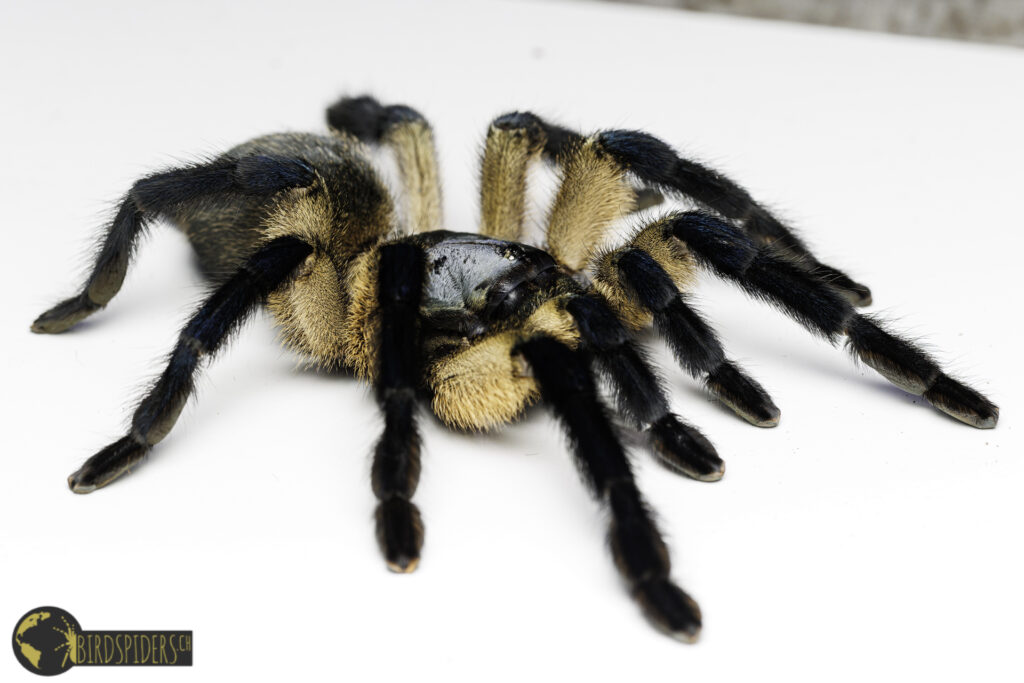
video care advice
feeding the Monocentropus balfouri at minute 09:36
References
Pocock, R. I. (1897). On the spiders of the suborder Mygalomorphae from the Ethiopian Region, contained in the collection of the British Museum. Proceedings of the Zoological Society of London 65(3): 724-774. doi:10.1111/j.1096-3642.1897.tb03116.x
Schmidt, G. (1993). Vogelspinnen: Vorkommen, Lebensweise, Haltung und Zucht, mit Bestimmungsschlüsseln für alle Gattungen, Vierte Auflage. Landbuch, Hannover.
Smith, A. M. (1986). The tarantula: classification and identification guide. Fitzgerald Publishing, London.
World Spider Catalog. Monocentropus balfouri. Available from: https://wsc.nmbe.ch/species/37693
